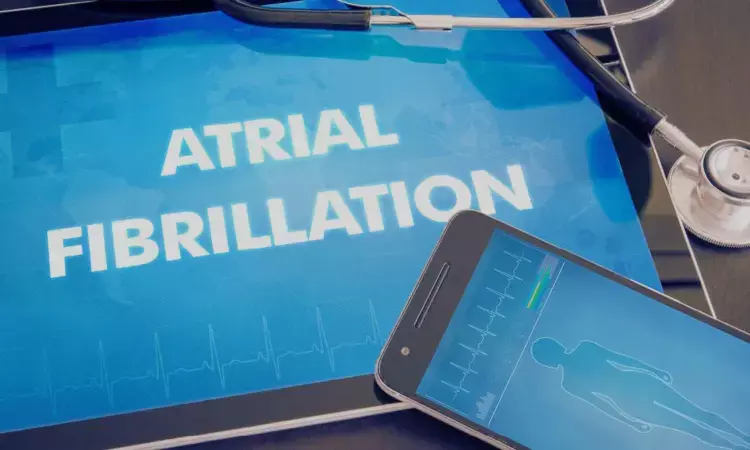- Home
- Medical news & Guidelines
- Anesthesiology
- Cardiology and CTVS
- Critical Care
- Dentistry
- Dermatology
- Diabetes and Endocrinology
- ENT
- Gastroenterology
- Medicine
- Nephrology
- Neurology
- Obstretics-Gynaecology
- Oncology
- Ophthalmology
- Orthopaedics
- Pediatrics-Neonatology
- Psychiatry
- Pulmonology
- Radiology
- Surgery
- Urology
- Laboratory Medicine
- Diet
- Nursing
- Paramedical
- Physiotherapy
- Health news
- Fact Check
- Bone Health Fact Check
- Brain Health Fact Check
- Cancer Related Fact Check
- Child Care Fact Check
- Dental and oral health fact check
- Diabetes and metabolic health fact check
- Diet and Nutrition Fact Check
- Eye and ENT Care Fact Check
- Fitness fact check
- Gut health fact check
- Heart health fact check
- Kidney health fact check
- Medical education fact check
- Men's health fact check
- Respiratory fact check
- Skin and hair care fact check
- Vaccine and Immunization fact check
- Women's health fact check
- AYUSH
- State News
- Andaman and Nicobar Islands
- Andhra Pradesh
- Arunachal Pradesh
- Assam
- Bihar
- Chandigarh
- Chattisgarh
- Dadra and Nagar Haveli
- Daman and Diu
- Delhi
- Goa
- Gujarat
- Haryana
- Himachal Pradesh
- Jammu & Kashmir
- Jharkhand
- Karnataka
- Kerala
- Ladakh
- Lakshadweep
- Madhya Pradesh
- Maharashtra
- Manipur
- Meghalaya
- Mizoram
- Nagaland
- Odisha
- Puducherry
- Punjab
- Rajasthan
- Sikkim
- Tamil Nadu
- Telangana
- Tripura
- Uttar Pradesh
- Uttrakhand
- West Bengal
- Medical Education
- Industry
Uterine Fibroids Linked to 50 Percent Higher Risk of Atrial Fibrillation in Young Women: Study

South Korea: A recent large-scale study has revealed that women diagnosed with uterine fibroids (UF) may face a significantly higher risk of developing atrial fibrillation (AF), a common cardiac arrhythmia linked to serious cardiovascular complications. The findings, published in Scientific Reports, were led by Dr. Eue-Keun Choi and colleagues from the Department of Internal Medicine at Seoul National University College of Medicine in South Korea.
The research assessed over 2.57 million women aged between 20 and 39 who underwent health screenings between 2009 and 2012. Among them, 20,682 were identified as having uterine fibroids based on diagnostic codes. The participants were followed for an average of 7.3 years to monitor the incidence of atrial fibrillation.
The key findings of the study were as follows:
- A total of 3,868 women developed atrial fibrillation (AF) during the study period.
- AF incidence was notably higher in women with uterine fibroids (UF), at 0.41 cases per 1,000 person-years, compared to 0.20 cases per 1,000 person-years in women without UF.
- After adjusting for various confounding factors, UF was found to be an independent risk factor for AF, with an adjusted hazard ratio (aHR) of 1.50.
- Women who underwent surgical procedures for fibroids, including myomectomy, high-intensity focused ultrasound (HIFU), or uterine artery embolization (UAE), did not show a significant reduction in AF risk.
- Women with UF who did not undergo surgical treatment had a significantly higher AF risk, with an adjusted hazard ratio of 1.69.
The study authors highlighted the clinical importance of these findings, noting that uterine fibroids—though common and often benign—can no longer be considered trivial in the context of cardiovascular health. As AF is associated with higher morbidity in female patients, recognizing sex-specific risk factors may help improve early diagnosis and guide preventive strategies.
However, the research team acknowledged several limitations. One concern was the potential for detection bias, as women with fibroids might visit hospitals more frequently, increasing the likelihood of AF diagnosis. The authors attempted to account for this by adjusting for healthcare utilization; however, residual bias may remain. Another limitation was the reliance on administrative codes rather than imaging or pathology to confirm fibroid diagnoses, which may have led to an underestimation of prevalence. Additionally, hormone therapy use, fibroid size, severity, and other gynecological factors were not analyzed due to a lack of available data.
Despite these constraints, the results were consistent across analyses, lending credibility to the observed association. The relatively small number of AF cases in the fibroid group and the subdivision by treatment status did raise questions about statistical power, but findings from propensity score–matched analyses supported the main conclusions.
The researchers emphasized that healthcare providers should be aware of this increased arrhythmia risk in women with uterine fibroids and consider careful monitoring for signs of AF. Future studies are needed to clarify whether different treatment approaches for fibroids could help mitigate cardiovascular risks.
Reference:
Han, S., Choi, E., Ahn, H., Kwon, S., Han, K., Lee, S., Oh, S., & Lip, G. Y. (2025). Increased risk of atrial fibrillation in uterine fibroid patients: A nationwide population-based study. Scientific Reports, 15(1), 1-8. https://doi.org/10.1038/s41598-025-12954-z
Dr Kamal Kant Kohli-MBBS, DTCD- a chest specialist with more than 30 years of practice and a flair for writing clinical articles, Dr Kamal Kant Kohli joined Medical Dialogues as a Chief Editor of Medical News. Besides writing articles, as an editor, he proofreads and verifies all the medical content published on Medical Dialogues including those coming from journals, studies,medical conferences,guidelines etc. Email: drkohli@medicaldialogues.in. Contact no. 011-43720751


